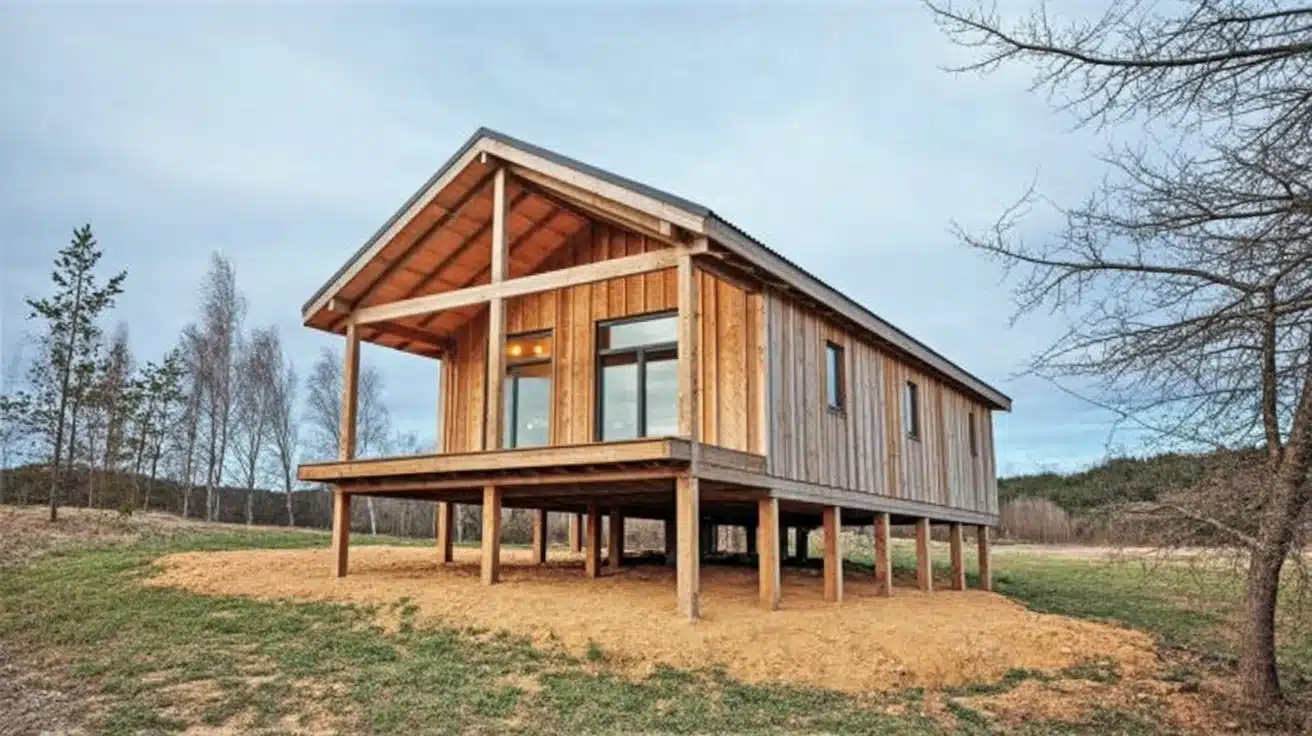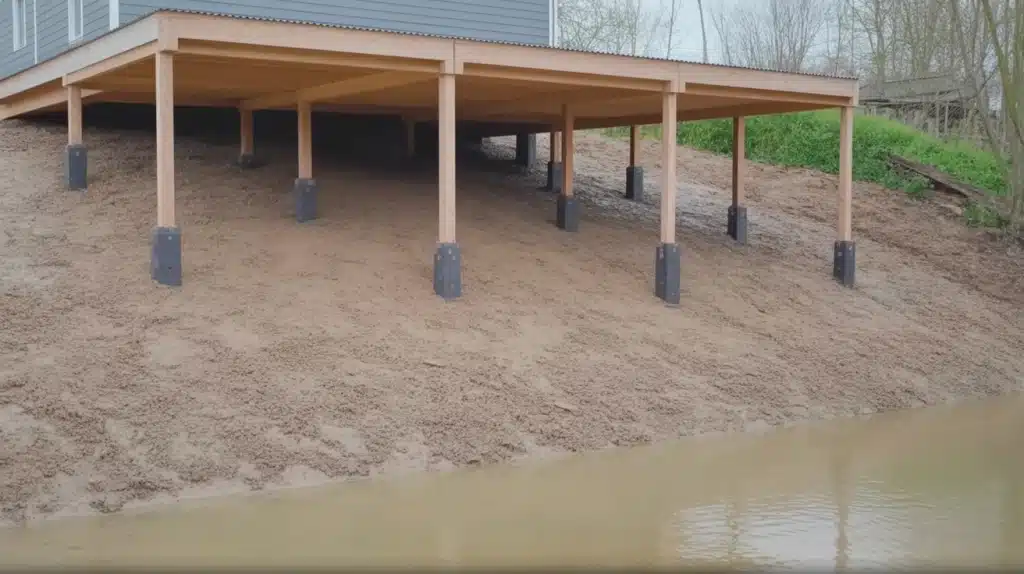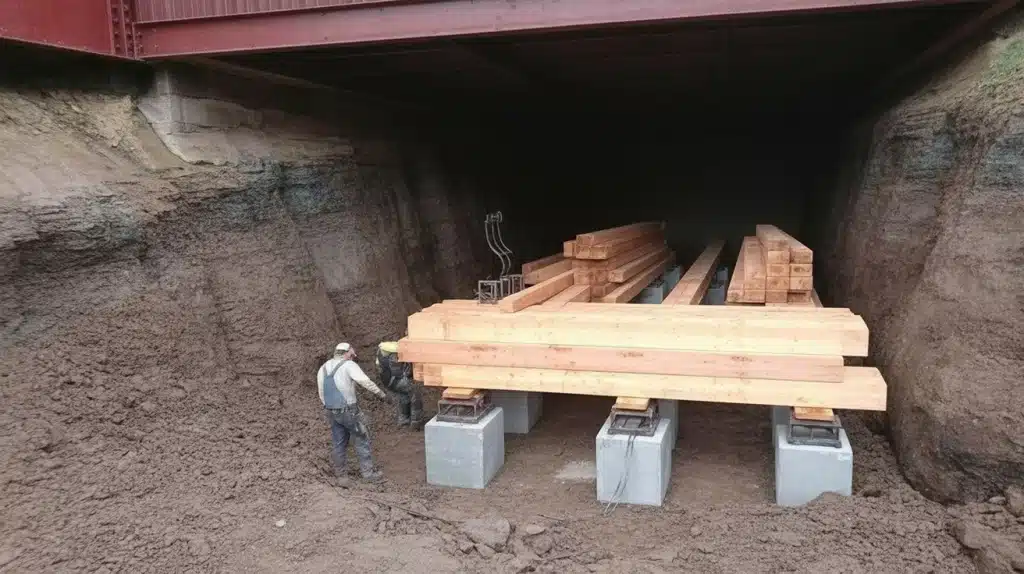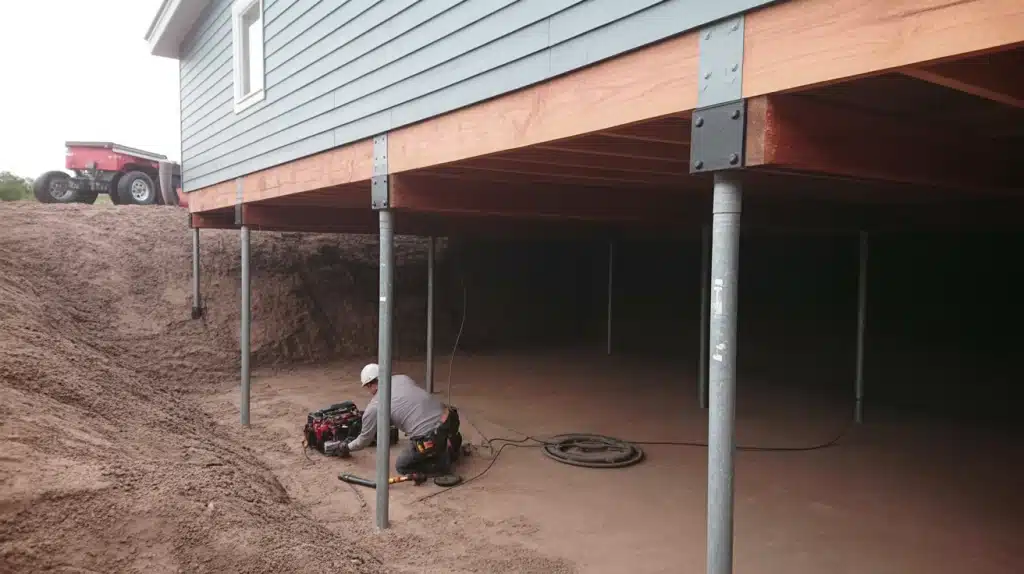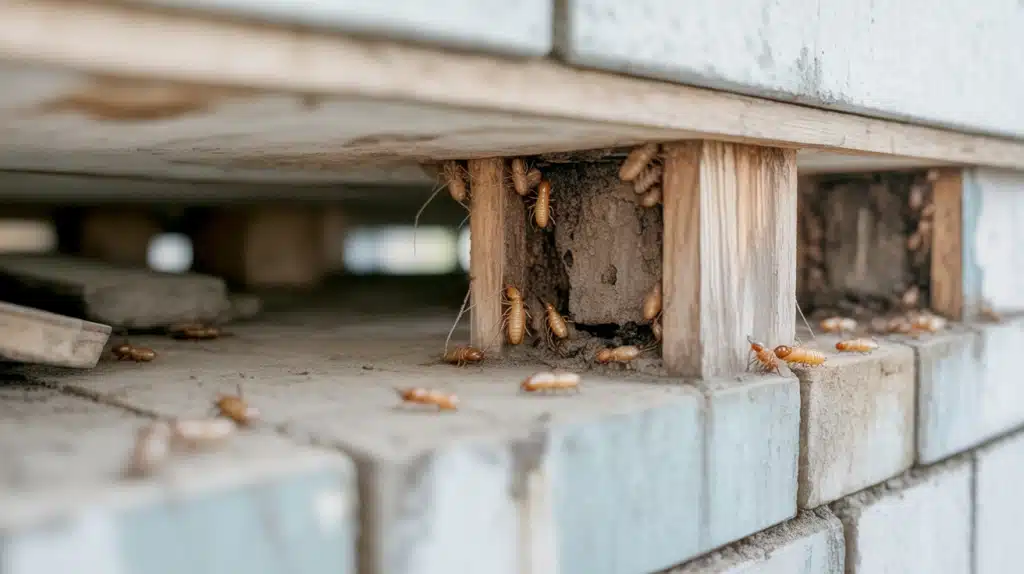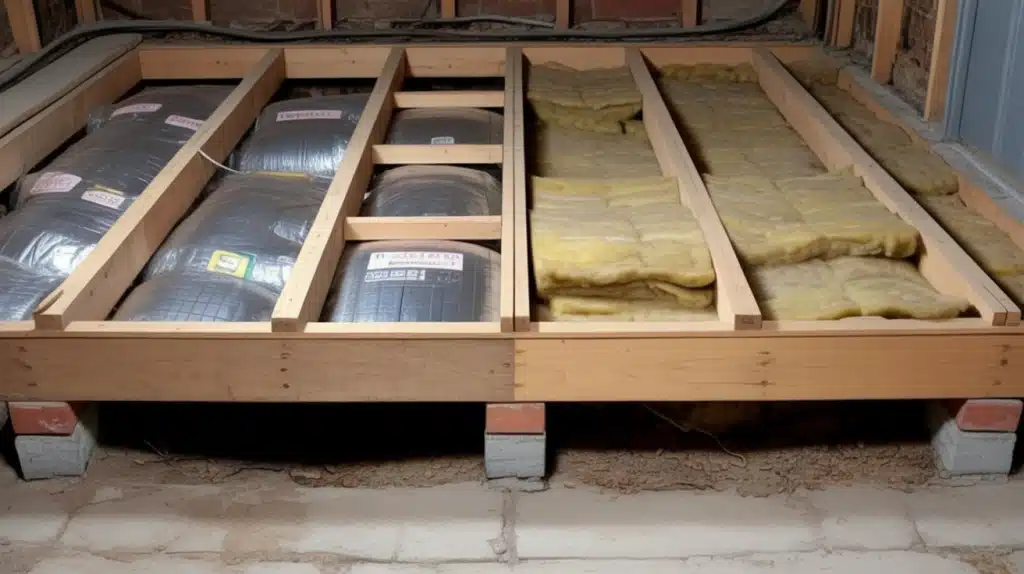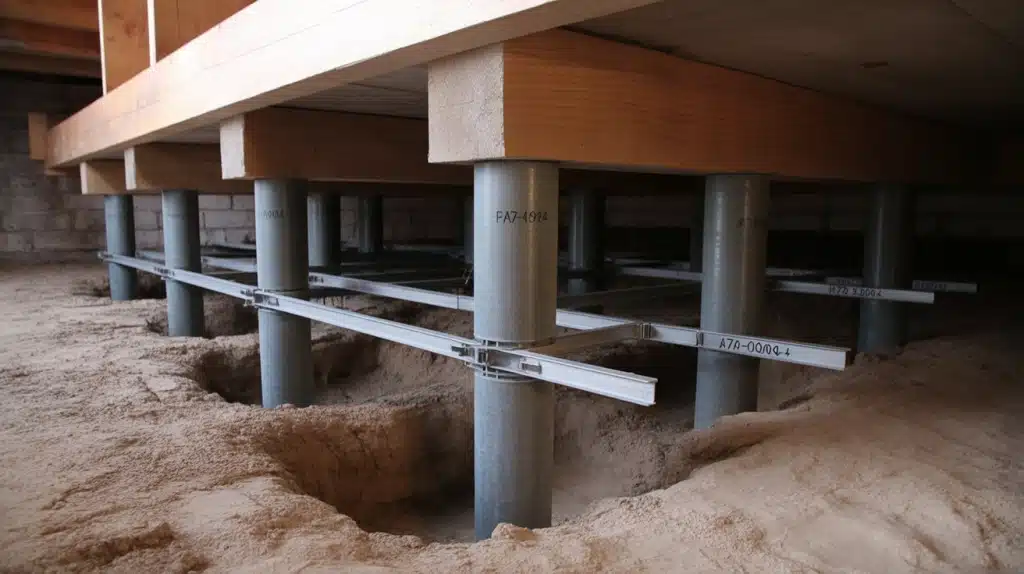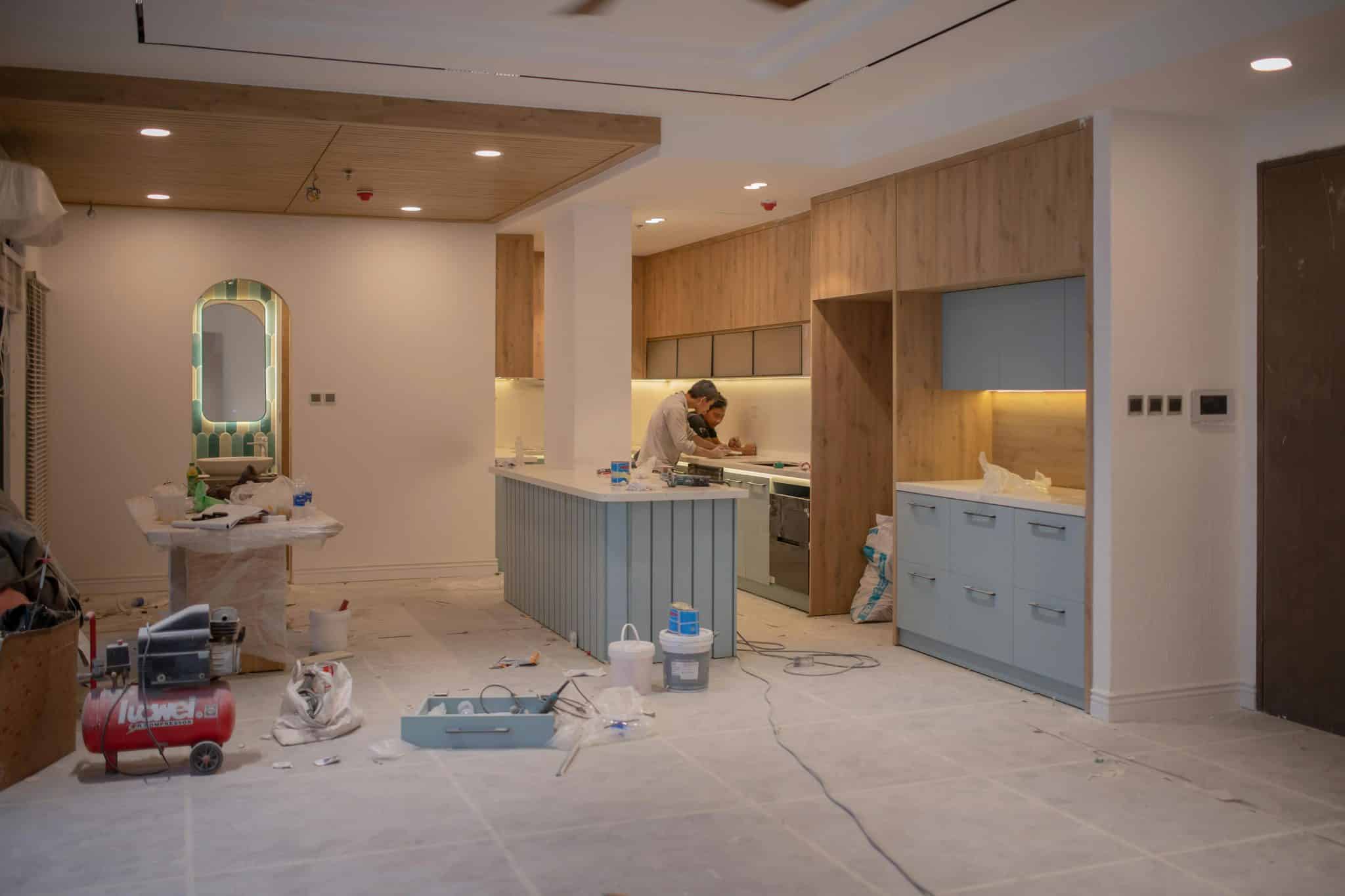What if your dream home site seems impossible to build on because of slopes, floods, or shifting soil?
Building on challenging terrains like flood zones, slopes, or unstable soil can feel impossible when traditional slabs won’t work.
A post and pier foundation solves these exact problems by lifting your home above ground level, giving you the structural flexibility you need for difficult sites.
I’ll cover everything about this foundation type, from understanding its basics to weighing the pros and cons, maintenance, challenges, and costs.
You’ll learn when this foundation type is suitable for your project, how it compares to other options, and what to expect during the construction process. By the end, you’ll know if this is the right choice for your building site.
Post and Pier Foundation Details
It is a structural system that utilizes vertical concrete piers, combined with wood or steel posts, to support horizontal beams that carry the weight of your home.
Think of it as creating a sturdy platform that lifts your entire house off the ground, leaving open space underneath called a crawl space.
By lifting your home 18 inches to several feet off the ground, you create a buffer against flooding and accommodate uneven terrain. For this, you work with soil that might not support a traditional concrete slab.
This makes it particularly valuable in coastal areas, floodplains, hillsides, and regions with expansive clay soils.
Why Consider Posts and Piers?
Now that you have a better idea of it, let me guide you on why you should use a post and pier foundation. Here are a few reasons explained below:
1. Site Suitability & Structural Flexibility
These foundations are most effective on challenging sites where other foundation types struggle.
The system adapts to uneven terrain, steep slopes, and expansive soils by setting piers at different heights and drilling deep to reach stable ground.
In coastal areas and flood zones, the extended design provides crucial protection.
While concrete slabs crack under shifting soil or flood damage, such foundations rise above these problems.
The flexible system can withstand minor ground movement without structural damage, making it ideal for areas with expansive clay soils.
2. Easy Construction
These foundations require much less excavation than basements – you’re only digging individual pier holes instead of removing massive amounts of earth.
This cuts labor costs and site preparation time, especially valuable in areas with difficult access or rocky conditions.
Material costs fall between concrete slabs and full basements.
You’ll use less concrete than in basements, but you’ll need specialized components like treated beams, metal connectors, and quality pier materials. The reduced excavation typically makes this trade-off cost-effective.
3. Crawl Space Benefit
The crawl space provides easy access to plumbing, electrical, and HVAC systems without requiring the cutting of concrete or the demolition of floors.
Individual components can be repaired without disturbing the entire foundation, and the elevated structure enables house relocation if needed.
Advantages of Post and Pier Foundation
Post and pier foundations offer several key benefits for challenging building sites.
- Flood Resistance: Raising your home off the ground protects against flooding and standing water. This matters most in coastal and low-lying areas.
- Easy Utility Access: The crawl space gives convenient access to plumbing and electrical systems. No concrete cutting needed for repairs.
- Superior Repairability: Individual piers or beams can be replaced without affecting the entire foundation. This makes repairs more affordable.
- Site Flexibility: Works great for uneven terrain, slopes, and problem soils. Traditional slabs fail where these foundations succeed.
- Lower Excavation Costs: Requires minimal digging compared to basements. You only dig holes for piers, not massive excavations.
Post and Pier Foundation Disadvantages
While solving many problems, post and pier foundations create some unique challenges.
- Moisture Issues: Crawl spaces can trap humidity without proper ventilation. This leads to mold and wood rot problems.
- Pest Problems: The open space attracts termites and rodents. Regular pest control becomes necessary.
- Energy Inefficiency: Raised floors are harder to insulate than slabs. Expect higher heating and cooling bills.
- Higher Maintenance: Needs regular crawl space inspections. Vapor barriers and vents require ongoing care.
- Initial Cost: Specialized materials and skilled labor increase upfront expenses. Quality installation costs more than basic slabs.
Understanding Costs for Installation of Post and Pier
Now, what comes to mind is how much it is going to cost you to install this foundation in your place. I’ll guide you through to find out using several factors listed below:
Average Cost Ranges
| Foundation Type | Cost Per Square Foot | Total Home Cost |
|---|---|---|
| Post & Pier | $7-$12 (up to $15) | $7,000-$24,000 |
| Concrete Slab | $4-$14 | $6,000-$20,000 |
| Custom/Large Homes | $12-$15+ | $30,000+ |
Post and pier foundations cost slightly more upfront than basic slabs, but they often provide better long-term value.
Easy access to utilities and the ability to make targeted repairs can save thousands of dollars over a home’s lifetime compared to expensive concrete cutting and reconstruction required with slab foundations.
Note: Individual piers typically cost $1,000–$3,500 each to install, with most standard homes requiring 7–10 piers for adequate support. This puts pier-only costs at $7,000–$30,000 before adding beams and other structural components.
Factors Responsible for the Final Cost
Your final foundation cost depends on several key variables:
- Foundation size and layout – Your biggest cost variables.
- Material choices – Steel or concrete piers cost more than wood options
- Soil and site conditions – Can create unexpected expenses
- Labor costs – Account for 20-40% of total expenses and vary by region
Post and Pier Problems and Fixes
Every foundation type has its challenges, and post-and-pier systems are no exception. These are the problems you might encounter and practical ways to address each one before they become costly headaches.
1. Moisture & Wood Decay
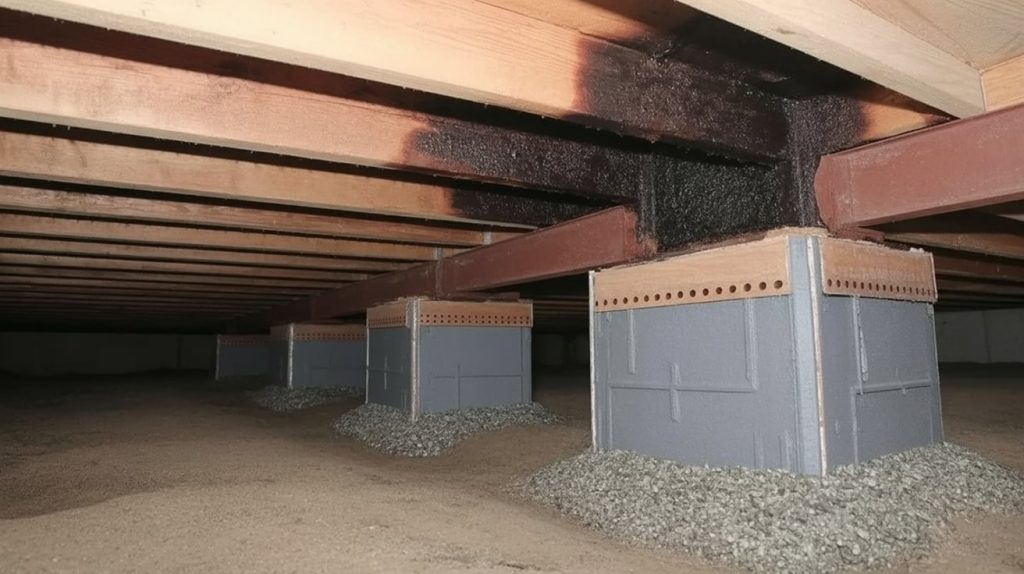
Problem: Crawl spaces naturally trap moisture, creating perfect conditions for wood rot and mould growth. Combat this with proper waterproofing around piers, installing drainage systems to redirect water away from the foundation, and ensuring adequate ventilation.
Fix: Install proper waterproofing, drainage systems, adequate ventilation, and ground vapor barriers. Vapour barriers on the ground help control humidity levels and protect wooden components from moisture damage.
2. Pest & Infestation Risks
Problem: The open crawl space attracts termites, rodents, and other pests seeking shelter. Prevention requires sealing all entry points, installing mesh screening around vents, and maintaining regular pest control treatments.
Fix: Seal entry points, install mesh screening on vents, use pest-resistant treated lumber, and maintain regular pest control. Treating wooden beams with pest-resistant chemicals adds another layer of protection against termite damage.
3. Energy Efficiency Due to Gaps
Problem: Raised floors create natural air gaps that make insulation challenging, leading to higher heating and cooling costs.
Fix: Install quality insulation between floor joists and seal all air leaks around the foundation perimeter. Proper insulation installation is crucial; gaps or compressed materials significantly reduce effectiveness.
4. Structural Concerns
Problem: These foundations face the risk of uneven settling and seismic movement without proper support.
Fix: Ensure piers extend deep enough to reach stable soil or bedrock, and install proper cross-bracing between piers for lateral stability.
In earthquake-prone areas, additional structural bracing and flexible connections help the foundation move with ground motion rather than fighting against it.
Comparison: Pier & Beam vs. Other Foundations
Understanding how post and pier foundations compare to other options, such as concrete slabs and a full basement, helps you make the right choice for your specific situation. I have given an easy comparison table for you to understand these based on various factors:
| Foundation Type | Cost | Installation Speed | Flood Resistance | Utility Access | Repairability | Best For |
|---|---|---|---|---|---|---|
| Post & Pier | Higher | Moderate | Excellent | Easy | Excellent | Uneven terrain, flood zones |
| Concrete Slab | Lower | Fast | Poor | Difficult | Poor | Level lots, budget builds |
| Full Basement | Highest | Slow | Poor | Good | Moderate | Cold climates, extra space |
This comparison shows that no foundation type is universally better – the right choice depends on your site conditions, budget, and long-term needs.
Wrapping Up
Post and pier foundations prove their worth when site conditions demand creative solutions. The decision isn’t about finding the “best” foundation – it’s about matching your specific challenges with the right structural approach.
Success depends on three critical factors: honest site assessment, quality installation, and consistent maintenance.
Don’t let upfront costs cloud your judgment if your property has flooding risks, slopes, or unstable soils. The long-term benefits often outweigh initial expenses.
Work with contractors experienced in your local conditions and soil types. They’ll spot potential issues before they become expensive problems.
Ready to move forward with your foundation decision? Drop your questions in the comments below. I’ll help you work through the details and make the right choice for your project.
Frequently Asked Questions
What is the Difference between a Post and a Pier?
A pier is the concrete foundation element that extends deep into the ground to reach stable soil, while a post is the vertical support (wood, steel, or concrete) that sits on top of the pier and connects to the horizontal beams above.
What is the Life Expectancy of a Pier and Beam Foundation?
A properly built and maintained pier and beam foundation can last 75-100 years, often outlasting the home itself when components are regularly inspected and replaced as needed.
Are Pier and Beam Foundations Safe?
Yes, pier and beam foundations are safe when properly designed and built to local codes. They provide excellent structural support and flexibility, though they require proper bracing in earthquake-prone areas.

